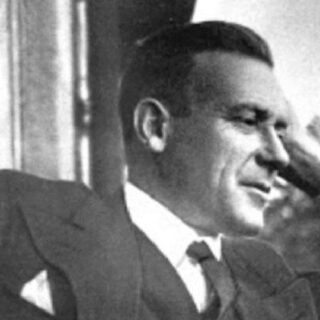
Late inthe spring of 1886, a young man named Hasegawa Tatsunosuke, known to the Japanese literary world by his penname Futabatei Shimei,’ began to write his first novel.
After he had struggled with it for many months, the first part was published in June 1887. The rest of the novel, which he called “Ukigumo” (“Drifting clouds”), appeared over the next two years. During the same years, Futabatei published two translations of stories by Ivan Turgenev and several translations of Russian literary criticism. By August 1889, when the last chapter of “Ukigumo” appeared, Futabatei had established himself as one of the leading writers in Japan. He had written a perceptive, realistic novel and made considerable progress toward perfecting a new colloquial narrative style. His vivid and accurate translations of fiction taught a whole generation of young Japanese writers the power of Western literature. His novel established the value of psychological realism and the merit of a simple but carefully constructed plot.
From 1881 to January 1886, Futabatei had studied Russian at the government-sponsored school of foreign languages, the Tōkyō Gaikokugo Gakkō. There he learned to read, write, and speak Russian extremely well. Among the teachers were Russian-born émigrés and Japanese who had lived in Russia. From them and from his own reading Futabatei developed a great interest in literature and aesthetics: before leaving school he decided to make a career of writing.
Within a few days after he left school, Futabatei called on Tsubouchi Shōyö, a well-established novelist, translator, and critic. Tsubouchi took a great interest in the young man and helped him with his writing. They soon became close friends, and Futabatei turned to Tsubouchi continuously throughout the years 1886 to 1889 for advice in the techniques of writing. It was through Tsubouchi’s intervention that Futabatei was able to get his first work into print. Tsubouchi also arranged for the publication of “Ukigumo”.
In 1885 Tsubouchi had completed a study of the novel form entitled Shōsetsu shinzui (the essence of novel). This essay was a plea for the revitalization of Japanese fiction. The introduction of Western literature in the years preceding and following the Meiji Restoration of 1868 had not contributed substantially to the development of Japanese fiction. Novels in the first two decades of the Meiji period continued to be written in the tradition of the early part of the nineteenth century: plots were loose and disconnected, and characterization weak. Western literature might have helped writers to see greater possibilities in fiction, but of the many translations published, few attempted to present all the material of the original. Generally, only the skeleton of the plot survived in the Japanese version. This practice tended to strengthen the Japanese writer’s inclination to concentrate on plot and did little to transmit the conception of strong characterization which was already so highly developed in Western literature. Tsubouchi argued for more accurate translations and for the acceptance of the theories of Western realism.
Tsubouchi could not write a satisfactory realistic novel himself, but by helping Futabatei with “Ukigumo” he was able to participate in the creation of Japan’s first modern novel. “Ukigumo” is a realistic novel in colloquial Japanese specifically designed to reveal the psychology of its characters. In place of the episodic tale of fantastic adventures so popular with nineteenth-century Japanese readers, Futabatei presented a story with the simplest possible plot. The whole novel hinges on the fact that the hero, Utsumi Bunzō, has lost his post in the lowest ranks of the government bureaucracy. As a consequence, he finds that his marriage to his cousin, Osei, which had been virtually assured, has now become impossible. Osei’s affections soon turn to Bunzō’s former colleague, the up-and-coming Honda Noboru. Futabatei tells his entire story within the confines of this plot. There are only four main characters — Bunzō, Noboru, Osei, and Osei’s mother, Omasa — and a few minor characters. It was Futabatei’s intention to picture the nature of his society through these characters; to demonstrate by means of the words and actions of his characters the effect of Meiji life on Japanese society.
Futabatei was a stubborn, difficult man. Whenever he believed in anything, he would defend his views with any weapon that came to hand. As a boy, he was frequently in trouble with his elders. He consistently refused to accept the advice of his family or his teachers and clung to his own opinions no matter what the cost. From boyhood on, he was extremely idealistic and could never learn to compromise with the realities of life. He maintained this approach even after reaching maturity and, as a consequence, soon found it difficult to make his way as a professional writer. He achieved his first success with “Ukigumo” and his translations of Russian fiction. By 1889 Futabatei was a novelist of considerable reputation and could easily have continued writing for a living if he had been willing to accept commissions for new works or to make the effort to produce articles with popular appeal. He refused to take this course. He abhorred the idea of writing for money and was now ashamed that he had begun his career in 1886 with such a plan in mind. Furthermore, he was unhappy with “Ukigumo;” it had not satisfied the ideal of perfection he had envisaged when he started it. In no mood to start another novel, he chose to turn his back on the literary world. In August of 1889 Futabatei accepted a post in the office of Kampõ, the official gazette of the Japanese government. This did not put an end to his study and writing, but it effectively removed him from the center of the literary scene; it was not until 1897, when he resumed publishing translations of Russian fiction, that he became known to the public again.
The story of Futabatei’s life from 1886 to 1889, the years during which he was writing “Ukigumo”, represents an important part of Japanese literary history. His first attempts at translating, the success of his novel and Turgenev translations, the suffering he endured in trying to make his principles, and his ultimate inability to compromise his ideals, all form part of that story. “Ukigumo” introduced an entirely new conception into Japanese literature. Through it Japan learned that the life of an ordinary man could provide material for a novel which would be as interesting as the tale of the bravest warrior. It is the product of the dreams and aspirations of one of Japan’s most intelligent writers, a man so sensitive to his own shortcomings that he was unable to continue his literary career in spite of his considerable success. Although he was one of the most famous writers of his day, Futabatei Shimei chose to adopt a new profession in 1889, but not before he had created the model for modern Japanese realism upon which subsequent writers have built a new literature.





